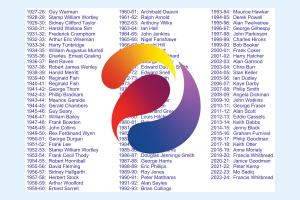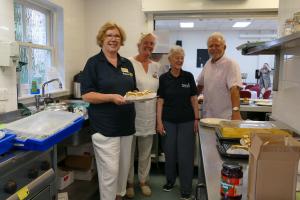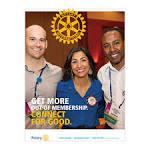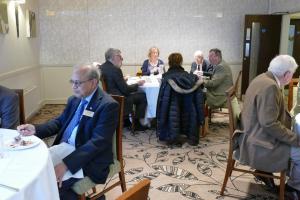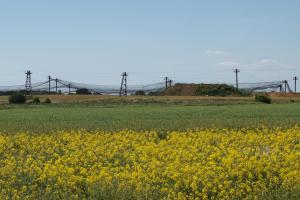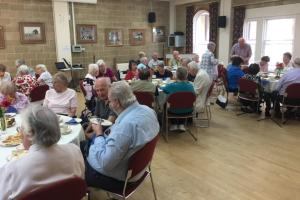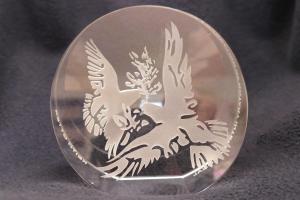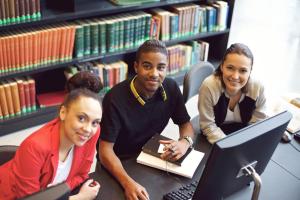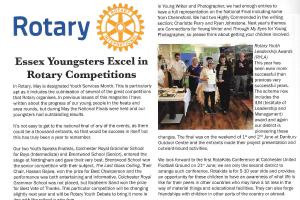Doreen Sim: Guide Dogs
Thu, Apr 15th 2021 at 1:00 pm - 2:15 pm
Very special friends!
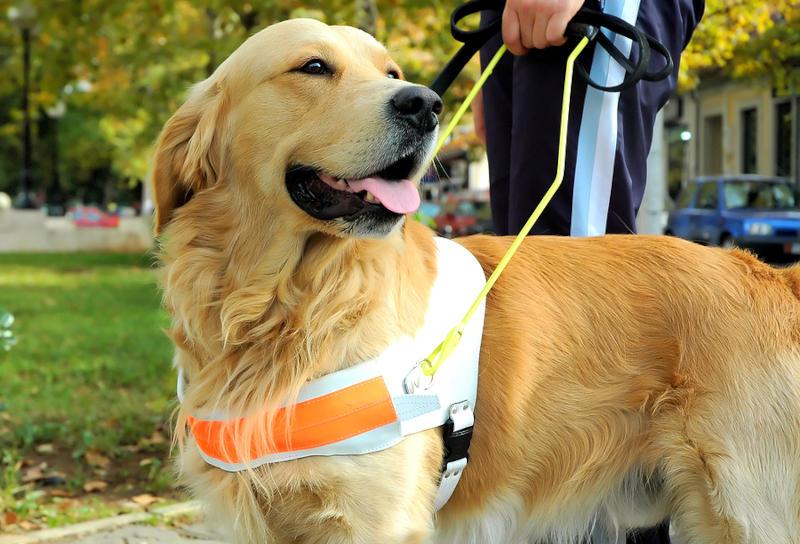
Doreen Sim, a volunteer dog walker with Guide Dogs was our speaker today. Her own dog, Dougie, joined her for our online meeting, although she apparently had to bribe him with treats to get him to appear in front of the camera.
She told us that the idea of guide dogs for the blind had originated with a German doctor in 1910. The doctor left one of his blind patients sitting in the garden with his dog. When he returned he realised that the patient had moved to another part of the garden and that the dog had guided him there.
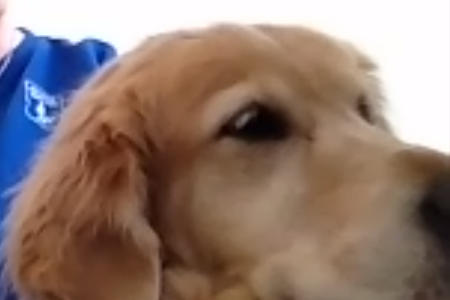 Guide dogs were not introduced to this country until the 1930s. Although a lot of people think that most guide dogs are Alsatians, it is generally Labradors that are used. Good results have also been achieved with crosses between Labradors and Retrievers, which combine the intelligence of the Labrador with the “laid back” nature of the Retriever. Other breeds have been tried but without the same success.
Guide dogs were not introduced to this country until the 1930s. Although a lot of people think that most guide dogs are Alsatians, it is generally Labradors that are used. Good results have also been achieved with crosses between Labradors and Retrievers, which combine the intelligence of the Labrador with the “laid back” nature of the Retriever. Other breeds have been tried but without the same success.
Guide Dogs have their own breeding kennels in Warwickshire. Semen from British dogs has been sent to parallel organisations in Canada and the United States. Some dogs are sent to Denmark and Norway and others come the other way.
The specialist kennels staff can sometimes spot whether a puppy is likely to make a good guide dog or not. Those unlikely to make the grade are passed on to other organisations. The puppies with guide dog potential are passed to volunteer dog walkers for socialisation and basic behaviour training before being returned to Guide Dogs for specialist training.
Doreen described some of this training to us. Guide dogs are not trained to come to heel. Instead, they are trained to walk slightly in front of their owners so they can guide them. As Doreen put it, they are trained to walk with their tails next their owners’ knees instead of their noses.
The dogs are trained to start walking upstairs by placing both front paws on the first step. The owner can sense the angle of the dog’s body through the harness and will know they are about to climb stairs. To go downstairs, the dog first sits at the top, which again can be sensed by the owner.
Of course, they are also trained to cross roads. Similar techniques are used to allow the owner to sense that the dog has come to a kerb. The dogs are trained to listen to the sound of the traffic in order to judge when it is safe to cross. Electric cars cause problems because they don’t make a noise but Guide Dogs is working with some of the manufacturers to address this. Problems are also caused by “shared space” roads, which are flat with no kerbs separating pedestrians from the traffic.
Guide dogs can additionally be trained to provide other assistance, eg to work as a hearing dog, but the training as a guide dog for the blind always comes first as it takes longer.
The harnesses are different colours depending on the nature of the owner’s disability. Yellow indicates the owner is blind. Red and white check show that the owner is both blind and deaf. Blue and white check is used when the owner is blind and also has some other medical condition that might require attention.
Owners and dogs are trained together over six weeks. During this time they will, among other things, learn how to work together to go to places the owner visits frequently, such as particular shops.
